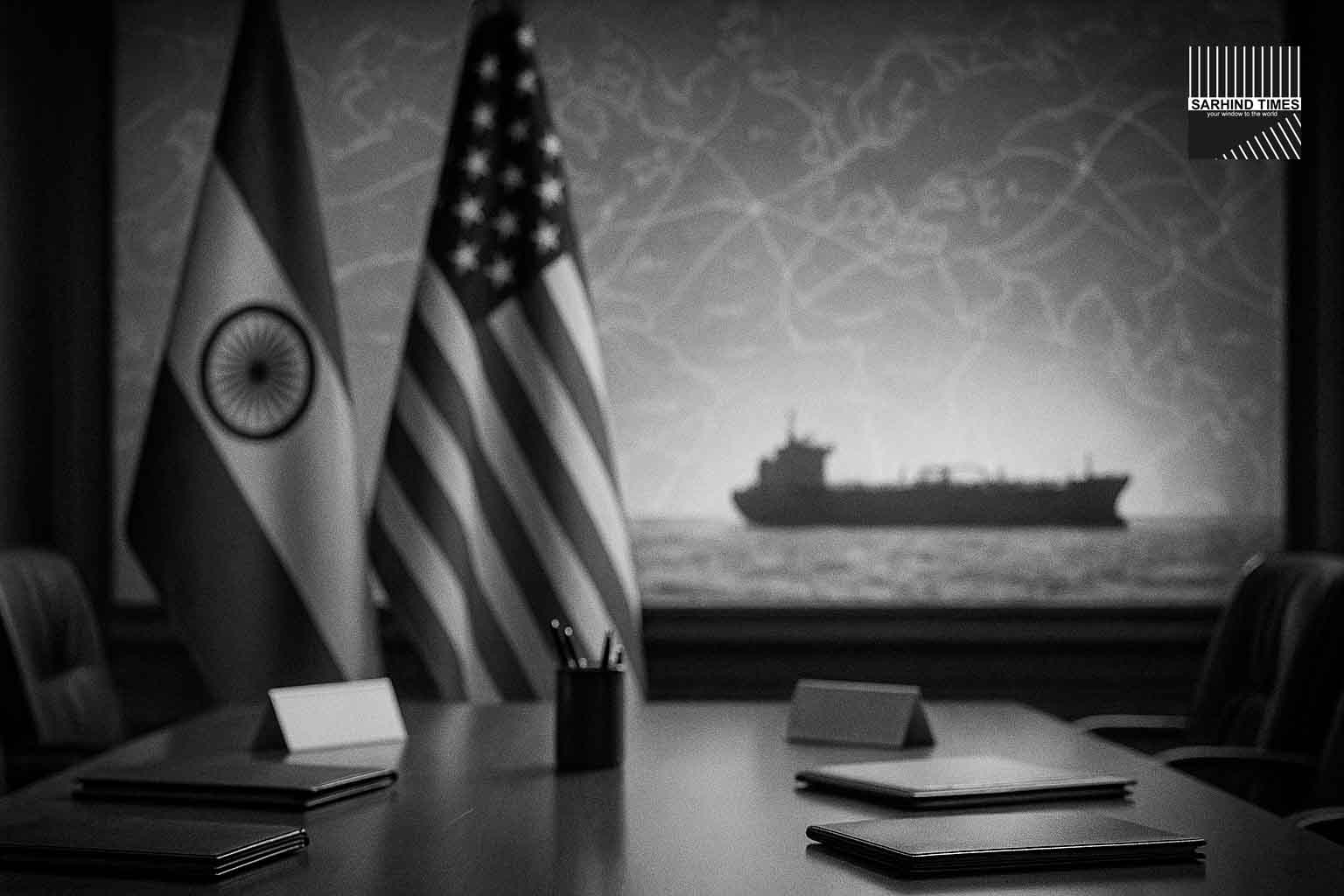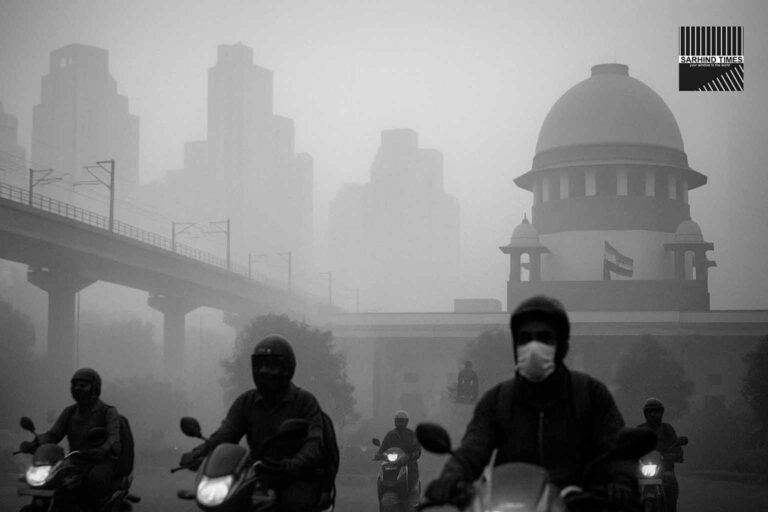Dateline: New Delhi | Tuesday, October 14, 2025 (IST)
After weeks of tariff-strained silence, New Delhi and Washington are back at the table this week, probing a narrow on-ramp toward a phased trade framework—with energy at the heart of the reset. Officials on both sides say a larger LNG/LPG purchase program from the U.S. is the practical sweetener India is willing to place on the table to stabilize ties, even as negotiators wrestle with services access, data rules, and standards. The working picture, according to people in the room: a measured, energy-anchored “first phase,” designed less to dazzle and more to de-risk trade for two economies that still target $500 billion in bilateral flows by 2030.
The Icebreaker: Energy as Confidence Currency
New Delhi’s signaling is straightforward: buy more U.S. molecules, cool the tariff heat. Reuters reporting indicates India has pledged to increase U.S. energy and gas imports as part of the post-tariff thaw; meetings have involved the incoming U.S. Ambassador-designate and India’s Commerce leadership, with the week’s engagements framed as an effort to restart talks that faltered over tariff escalations and Russia-linked supply anxieties.
The granular evidence is piling up:
- U.S. LPG tender: India’s state refiners extended the deadline for their first annual, joint U.S. LPG import tender to Oct 17—about 2 million tons from 2026, signaling a structural shift in the cooking-gas basket.
- LNG capacity runway: New Delhi plans to lift regas capacity ~27% to 66.7 MTPA by 2030, the steel-and-concrete prerequisite for any meaningful LNG pivot.
- Deal scaffolding: Through 2025, Indian oil companies have explored long-term U.S. LNG deals and policy tweaks (including duty relief) to make cargoes competitive against Middle-East benchmarks.
Energy, in short, is the fastest lever to shrink the goods-trade gap while creating dependable inputs for India’s growth story. It is also the least controversial political sell on both sides of the aisle.
What’s On The Table (And What Isn’t)
Phase-One contours. The near-term goal, negotiators indicate, is incrementalism with ballast—a limited package that tees up bigger chapters later. In scope:
- Energy purchases (LNG, LPG; selective petrochemicals) as a numerical bridge on trade balance.
- Tariff de-escalation or exemptions for a short list of Indian export pain points (textiles, leather, gems & jewellery, food products), contingent on measurable energy traction.
- Regulatory consultations on digital trade, data adequacy, services mobility, and standards—not solved, but structured into an implementation track to maintain momentum.
What’s sensitive. Washington’s concern that Russian-linked energy flows free up cash elsewhere will remain a subtext; Delhi’s red lines on data localization, public procurement, and pharma/device pricing are unlikely to move in a first tranche. The point of the current chapter is pragmatic stabilization, not a maximalist “grand bargain.”
Why Energy? The Math Behind The Mood
Every LNG cargo is a high-value invoice—a point U.S. trade strategists have emphasized as they look for quick ways to narrow the gap. Yet India’s import managers won’t sign sentimental contracts: landed cost versus Middle-East benchmarks rules. That’s why the policy signaling—duty relief on U.S. LNG, terminal expansions, and multi-year LPG procurement—matters. It improves U.S. molecule math without forcing India into uneconomic commitments.
Meanwhile, the LPG tender extension to Oct 17 is not cosmetic. At ~2 MTPA from 2026 (≈48 VLGCs), it could lift the U.S. share of India’s LPG basket to ~10%, deliberately reducing single-region concentration and creating an annual cadence of energy orders that are easy to book into trade-balance accounting.
The $500B North Star—Still Credible?
Both capitals have re-affirmed the $500B by 2030 target this year. Skeptics note that the path is steeper after a tariff flare-up and missed windows in mid-2025; realists argue that energy + electronics + services can still compound to the number, if policy friction is actively managed. For now, the restart this week, the energy line-items, and constructive signals from late-September sit-downs restore a baseline of negotiating hygiene.
Key enablers to watch:
- Semiconductor & electronics supply chains moving from MOUs to POs.
- Services (IT, consulting, GBS) maintaining visa/work authorization stability.
- Critical minerals cooperation that ties climate manufacturing to trade.
- Tariff ladders that ratchet down predictably, not episodically.
India’s Ask: Tariff Relief Where It Hurts
India’s export champions—textiles, leather, gems & jewellery, agri/food—have absorbed the brunt of tariff spikes. Delhi’s message: narrow the spikes, unlock fresh energy buys. A fair trade in the political arithmetic of both capitals. The risk is sequencing—who moves first, how much, and how fast—which is why officials describe the current approach as “first-phase with guardrails.”
Washington’s Ask: Assurance, Access, Architecture
For Washington, the energy plank addresses a headline irritant (the goods gap) while trade officials quietly prioritize:
- Market access consistency (predictable standards, fewer sudden policy shifts).
- Data & digital trade rules that don’t bifurcate operating models.
- Downside insurance against Russia-linked flows, even as India diversifies.
The ambassador-designate’s early engagement with India’s Commerce team underlines the political salience of a stable mini-deal before electoral and policy calendars narrow the window again.
Industry Temperature: Cautious Welcome
Indian industry associations welcome the restart, but the fine print—services access, data flows, TBT/standards—will make or break the win rate for exporters beyond energy math. For energy importers, Henry Hub–linked structures versus oil-linked formulas remain a strategy choice, tied to terminal availability and downstream demand. For U.S. exporters, the cautionary note from August remains: don’t over-assume India’s switch-out potential from Middle-East incumbents without pricing and logistics aligned.
Execution Risks: Three Tripwires
- Tariff Politics. If tariff suspensions lapse without a visible tradeoff (e.g., signed energy volumes), pressure will boomerang.
- Fuel Price Volatility. A sudden ATF/LNG rally can wreck spreadsheet diplomacy; duty tweaks and flex clauses will be essential.
- Process Drift. Without route-maps and deadlines, “constructive” turns to cotton wool. September’s “constructive” readout needs concrete deliverables this quarter.
The Week’s Checklist: What To Watch
- Delegation optics & readouts: India’s commerce-secretary-led team and U.S. counterparts; look for joint lines on energy & first-phase scope.
- LPG tender close (Oct 17): Signals volume commitment and cadence of U.S. cargoes from 2026.
- Any LNG duty comment: Even a “review under consideration” is a strong directional cue.
- Reuters & agency wires on the talks: Expect language discipline; any mention of tariff pauses or a target list is meaningful.
Explainer: Why a “Small” Deal Can Be Big
In a tariff-edgy world, a limited, energy-anchored stabilization has oversized value:
- It normalizes calendars—moving ministers and negotiators from fire-fighting to scheduled progress.
- It anchors expectations for exporters and importers on both ends.
- It rebuilds habit: quarterly working groups that survive politics and personality.
Add to that the $500B 2030 ambition: it can’t be hit by one big bang. It requires boring, bankable increments—and this week’s re-engagement is the first of those increments.
The View From Dalal Street & Houston
Markets will mark to tariff guidance and energy purchase visibility. A seen-to-be-working mini-deal compresses policy risk premia, supporting exporters’ capex calendars. In Houston, U.S. LNG/LPG exporters will track term sheet chatter, tolling slots, and shipping availability (VLGCs for LPG, Q-Flex/Q-Max compatibility for LNG terminals)—because policy without berth schedules doesn’t move molecules.
Bottom Line
Trade diplomacy is dull when it works. Energy cargoes + tariff tact can turn down the temperature fast, leaving hard chapters—services, data, standards—to a sturdier process. Both sides get a win they can explain at home. And the $500B target gets a path rather than a press release.
#Trade #IndiaUS #Tariffs #Energy #Exports #BilateralTies #Economy #LNG #LPG
























+ There are no comments
Add yours